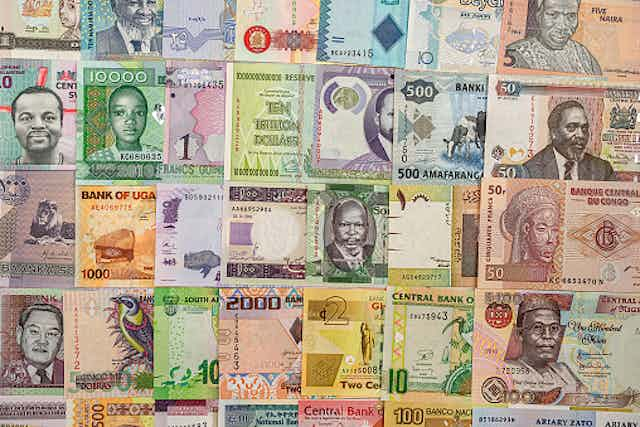The high cost of making cross-border payments on the African continent has driven governments on the continent to seek options of settling trade and other transactions in local currencies. This has given birth to the Pan-African Payment and Settlement System which is scheduled to go live in 2024 under Kenya’s leadership.
Development economist Christopher Adam, who has studied the exchange rate policies of African countries, answers some key questions.

Why are African countries exposed in the international currency market?
Three main reasons. First, African economies are small and as such are highly dependent on trade with the rest of the world. Their exports are dominated by primary commodities including oil and gas, minerals and cash crop agriculture. On the import side, they purchase a whole range of goods – from essential commodities not produced at home such as food, drugs and medicines, to capital goods and energy. A large proportion of these are sourced from China and other major economies of the global north. But because African countries are small relative to their trading partners they rarely have the power to determine the prices of imports and exports. They are “price takers” in world markets. And with world prices being set in the major reserve currencies of the world (the US dollar, euro, yen and renminbi), African countries are exposed to movements in these world prices.
Second, “intra-African” trade is still a relatively small proportion of the total trade of African countries.
Finally, since African countries’ currencies mostly can’t be directly exchanged in international transactions, the dollar remains the most widely used currency in trade, even between African countries.
What’s required for the system to get off the ground?
The basic idea of the system is to be able to settle trade between African countries without having to use the US dollar.
There are two major challenges with that. First, intra-African trade accounts for less than 15% of Africa’s exports at present (although supporters of the African Continental Free Trade Area expect this to grow significantly over the coming decades). The African payment system therefore does not eliminate the role of the dollar (or other foreign currencies) in trade settlement entirely.
The second issue is that trade is not balanced between African countries. For example, Kenya exports goods of higher total value to Ethiopia than it imports from Ethiopia. If Ethiopia paid in its own currency, Kenya would end up with Ethiopian currency that it didn’t need. Some form of settlement currency that is acceptable to all is required – most likely the US dollar.
What are the challenges and potential risks?
Since trade rarely occurs instantaneously, some institution in the trade financing chain carries the exchange rate risk. Because of the gap between placing an order for imports and receiving them to sell in the local economy, there is a risk that the value of local currency will change relative to the currency in which the import is denominated.
In the “old” system, this risk is borne by the trader because everything is priced in dollars. The local currency value of the income from exports or the local currency cost of imports will change with movements between the local currency and the dollar, but the banks and those counterparts pricing in the dollar are protected.
Under the new system, the same allocation of risk will remain in “external trade”. This currency risk is also present for intra-African trade.
An important question for the new African payment system is: who bears the exchange risk if one African currency depreciates relative to another? Should the importer carry the risk, or the exporter? Can and should the African payment system bear this risk of exchange rate movements itself? Where both currencies are volatile, traders might still prefer the relative stability of settlement through the US dollar.
The success of this system also depends on scale. The more trade settlement is routed through it, the easier it will be to settle in local currencies. Large currency imbalances will be less common. But until the system achieves this scale, the African payment system will need a strong balance sheet so that traders and participants can have confidence that settlement will be swift and risk-free. It is unclear at the moment how this is to be achieved.
What is the best-case scenario?
If the system can address the trade imbalance problem, provide clarity on risk management and reach scale, it could be very successful. But this is all going to be driven by underlying economic performance. Improved settlement will help but what is really driving this is the structure of trade. The more the economies of Africa can develop intra-African trade and the less dependent they are on extra-African trade, the less will be dollar dependence in trade. This growth in trade depends to some degree on trade settlement and trade financing but much more on production, consumption, trade policy and fiscal policy.
***
Christopher Adam, Professor of Development Economics, University of Oxford
This article is republished from The Conversation under a Creative Commons license.





